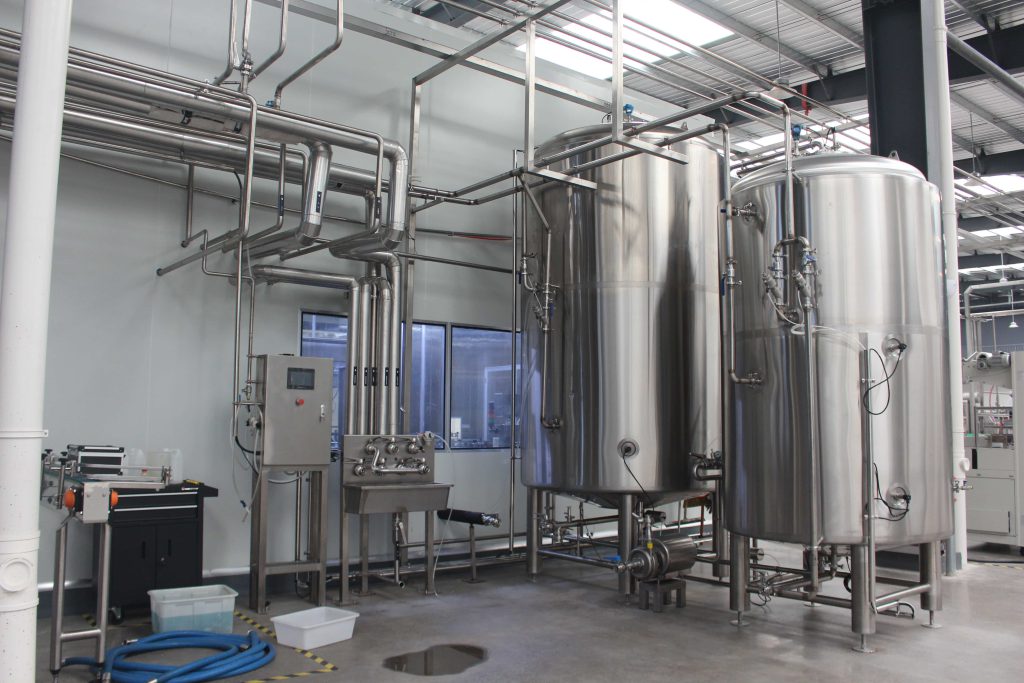Introduction

Food safety is a critical concern in today’s world, as consumers demand high-quality, safe products. One of the most effective methods to ensure food safety is pasteurization. This process, pioneered by Louis Pasteur, involves heating food products to a specific temperature for a set period to kill harmful microorganisms. Modern pasteurization equipment has revolutionized this process, making it more efficient and reliable. This blog explores the role of pasteurization equipment in enhancing food safety standards, its various types, benefits, and future trends.
The Importance of Pasteurization in Food Safety
Historical Context
The concept of pasteurization dates back to the 19th century when Louis Pasteur discovered that heating wine could prevent spoilage. Since then, pasteurization has expanded beyond beverages to include dairy products, juices, and even canned goods. This technique has significantly reduced foodborne illnesses caused by pathogens such as Salmonella and E. coli.
Current Statistics on Foodborne Illnesses
According to the Centers for Disease Control and Prevention (CDC), foodborne illnesses affect millions of Americans each year, leading to significant health care costs. The application of effective pasteurization equipment has been pivotal in reducing these incidents.
| Year | Estimated Illnesses | Hospitalizations | Deaths |
|---|---|---|---|
| 2015 | 48 million | 128,000 | 3,000 |
| 2020 | 50 million | 130,000 | 3,200 |
| 2022 | 47 million | 130,000 | 3,000 |
Types of Pasteurization Equipment
Batch Pasteurizers
Batch pasteurizers, also known as vat pasteurizers, heat food products in large tanks. This equipment is ideal for small to medium-sized operations and allows for precise control over temperature and time.
Continuous Flow Pasteurizers
Continuous flow pasteurizers are designed for high-volume production. Products move through the system in a continuous stream, ensuring rapid heating and cooling, which increases efficiency and reduces production time.
High-Temperature Short-Time (HTST) Pasteurizers
HTST pasteurizers operate at higher temperatures for shorter periods. This method is commonly used for milk and juice processing, ensuring that products retain their quality while achieving safety standards.
Ultra-High Temperature (UHT) Pasteurizers
UHT pasteurizers heat products to temperatures above 135°C (275°F) for a few seconds. This technique allows for shelf-stable products without refrigeration, making it essential for the dairy and beverage industries.
Benefits of Using Pasteurization Equipment
Enhanced Food Safety
The primary benefit of pasteurization equipment is enhanced food safety. By effectively eliminating harmful microorganisms, these systems help prevent outbreaks of foodborne illnesses.
Extended Shelf Life
Pasteurized products have a longer shelf life compared to raw items. This benefit not only reduces food waste but also enables manufacturers to distribute their products over longer distances.
Quality Preservation
Modern pasteurization methods are designed to preserve the taste, texture, and nutritional value of food products. Advanced equipment minimizes the impact of heat on the final product, ensuring consumer satisfaction.
Regulatory Compliance
Food safety regulations are becoming increasingly stringent. Using certified pasteurization equipment helps manufacturers comply with these regulations, avoiding penalties and protecting their brand reputation.
The Role of Technology in Pasteurization
Automation and Control Systems
Modern pasteurization equipment often includes automated control systems that monitor temperature and flow rates. This technology ensures that the pasteurization process is consistent and minimizes human error.
Integration with IoT
The Internet of Things (IoT) has started to influence the food processing industry. IoT-enabled pasteurization equipment can provide real-time data on process efficiency, helping manufacturers make informed decisions.
| Technology | Description | Benefits |
|---|---|---|
| Automation | Uses sensors and controls for precision | Reduces errors, enhances consistency |
| IoT Integration | Connects equipment to the internet | Offers real-time monitoring and analytics |
| Data Analytics | Analyzes data for operational insights | Improves efficiency and reduces costs |
Challenges in Pasteurization
Cost of Equipment
The initial investment in pasteurization equipment can be significant, particularly for advanced systems. Smaller producers may struggle to afford the latest technology, which could affect their competitiveness.
Energy Consumption
While modern pasteurizers are more efficient, energy consumption remains a concern. Producers must balance operational efficiency with environmental sustainability.
Training and Expertise
Operating advanced pasteurization systems requires trained personnel. Manufacturers must invest in training to ensure that employees can effectively manage and maintain the equipment.
Future Trends in Pasteurization Equipment

Increased Focus on Sustainability
The food industry is moving towards more sustainable practices. Future pasteurization equipment will likely focus on energy efficiency and waste reduction, aligning with global sustainability goals.
Development of Smart Pasteurizers
Smart pasteurizers that leverage AI and machine learning will likely become more prevalent. These systems can optimize processes in real-time, further enhancing food safety and efficiency.
Customization and Flexibility
As consumer preferences evolve, manufacturers will need to adapt quickly. Future pasteurization equipment will focus on customization, allowing for variations in products without compromising safety standards.
Conclusion
In summary, pasteurization equipment plays a crucial role in enhancing food safety standards. From historical roots to modern advancements, the evolution of this technology has made significant strides in protecting public health. As challenges persist and trends evolve, the food industry must continue to invest in cutting-edge pasteurization solutions to ensure that consumers receive safe and high-quality products.
FAQ
What is pasteurization?
Pasteurization is a process that involves heating food products to a specific temperature for a defined period to kill harmful microorganisms.
How does pasteurization enhance food safety?
By eliminating pathogens and spoilage organisms, pasteurization reduces the risk of foodborne illnesses and extends the shelf life of products.
What types of products are commonly pasteurized?
Commonly pasteurized products include milk, fruit juices, canned goods, and certain sauces.
Is pasteurized food safe for everyone?
Generally, pasteurized food is safe for most people, including those with weakened immune systems. However, individuals should always consult with health professionals regarding their dietary choices.
How can I ensure that pasteurized products are safe?
Always check for proper packaging, expiration dates, and storage instructions to ensure that pasteurized products maintain their safety and quality.

